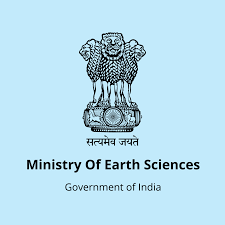Cabinet approves overarching scheme “PRITHvi VIgyan (PRITHVI)” of the Ministry of Earth Sciences
The Union Cabinet Chaired by the Prime Minister, Shri Narendra Modi has approved the overarching scheme “PRITHvi VIgyan (PRITHVI)” of Ministry of Earth Sciences, for implementation during the period from 2021-26 at an overall cost of Rs. 4,797 crore. The scheme encompasses five ongoing sub-schemes namely “Atmosphere & Climate Research-Modelling Observing Systems & Services (ACROSS)”, “Ocean Services, Modelling Application, Resources and Technology (O-SMART)”, “Polar Science and Cryosphere Research (PACER)”, “Seismology and Geosciences (SAGE)” and “Research, Education, Training and Outreach (REACHOUT)”.
The major Objectives of the overarching Prithvi Scheme are:
· Augmentation and sustainance of long-term observations of the atmosphere, ocean, geosphere, cryosphere and solid earth to record the vital signs of the Earth System and change
· Development of modelling systems for understanding and predicting weather, ocean and climate hazards and understanding the science of climate change
· Exploration polar and high seas regions of the Earth towards discovery of new phenomena and resources;
· Development of technology for exploration and sustainable harnessing of oceanic resources for societal applications
· Translation of knowledge and insights from Earth systems science into services for societal, environmental and economic benefit.
Ministry of Earth Sciences (MoES) is mandated to translate Science to Services for the Society in providing services for weather, climate, ocean and coastal state, hydrology, seismology, and natural hazards; to explore and harness marine living and non-living resources in a sustainable manner for the country and to explore the three poles of the Earth (Arctic, Antarctic and Himalayas). These services include weather forecasts (both on land and in the Oceans) and warnings for various natural disasters like tropical cyclones, storm surge, floods, heat waves, thunderstorm and lightning; alerts for Tsunamis and monitoring of earthquakes, etc. The services provided by the Ministry are being effectively used by different agencies and state governments for saving human lives and minimising damages to the properties due to natural disasters.
The research & development and operational (services) activities of MoES are carried out by ten Institutes of MoES, viz. India Meteorological Department (IMD), National Centre for Medium Range Weather Forecasting (NCMRWF), Centre for Marine Living Resources and Ecology (CMLRE), National Centre for Coastal Research (NCCR), National Centre for Seismology (NCS), National Institute of Ocean Technology (NIOT), Indian National Centre for Ocean Information Service (INCOIS), Hyderabad, National Centre for Polar and Ocean Research (NCPOR), Goa, Indian Institute of Tropical Meteorology (IITM), Pune and National Centre for Earth Science Studies (NCESS). A fleet of oceanographic and coastal research vessels of the Ministry provide required research support for scheme.
Earth System Sciences deal with all the five components of the earth system: atmosphere, hydrosphere, geosphere, cryosphere, and biosphere and their complex interactions. The Ministry of Earth Sciences (MoES) holistically addresses all the aspects relating to the Earth System Science. The overarching scheme of PRITHVI will holistically address all the five components of earth system to improve the understating of the Earth System Sciences and to provide reliable services for the country. Various components of PRITHVI scheme are inter-dependent and are carried out in an integrated manner through combined efforts of the concerned Institutes under MoES. The overarching scheme of Prithvi Vigyan will enable development of integrated multi-disciplinary earth science research and innovative programs across different MoES institutes. These integrated R&D efforts will help in addressing the grand challenges of weather and climate, ocean, cryosphere, seismological science and services and explore the living and non-living resources for their sustainable harnessing.

